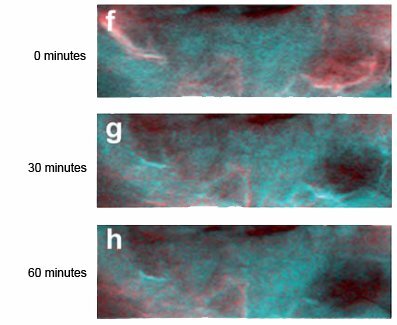Historical glass is prone to weathering and this is especially the case for non-durable mediaeval glass. Among a variety of known alteration defects, the formation of dark-coloured manganes inclusions or stains inside the glass is currently drawing our attention. These inclusions are composed of highly oxidised manganese compounds and lead to a decrease of the glass transparency as well as a darkening/browning. In some extreme cases of darkening, a non-reversible conservation treatment with reducing or chelating agents is considered. This in an attempt to transform the +IV oxidation state of Mn back into +II or +III and thus restoring the transparency of the glass.
In our research group, the effect of such treatments is investigated by means of laboratory methods: SEM-EDX, desktop µCT and LA-ICPMS as well as by synchrotron based techniques SR- µCT, µXRF and µXANES. In the past, it was observed how reducing treatments e.g. treatment with hydroxylamine hydrochloride do not only reduce the mangese oxides in the inclusions, but also cause diffusion and removal of Mn. Therefore our main focus lies in studying the change of Mn location and speciation caused by conservation treatments. However, apart from deontological considerations, the heterogeneity of historically weathered glass makes it difficult to assess and intercompare the impact of such treatments on specific objects. Therefore, in this framework, standardised weathered glass was developped in order to facilitate an objective evaluation of different treatment methods.

composite chemical state maps recorded around the Mn-Kalpha absorption edge, with Mn(IV) in red and Mn(II) in cyan. Images F-G demonstrate the reduction over time of dark Mn inclusions in glass during treatment with a 2 wt% hydroxylamine.HCl solution. Species selective images were obtained by combining µ-XANES point measurements and μ-XRF scanning at beam line ID21 of the European Synchrotron Radiation Facility. two energies. subtracted).